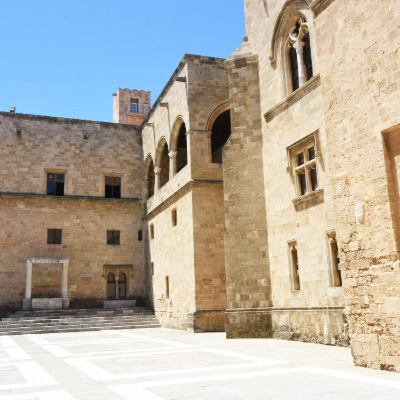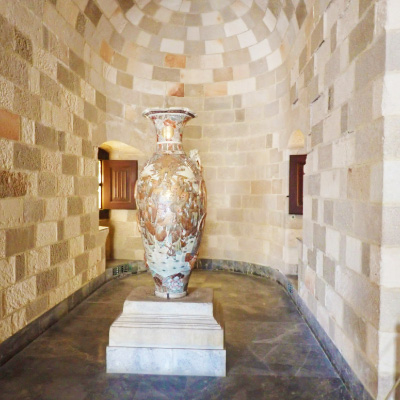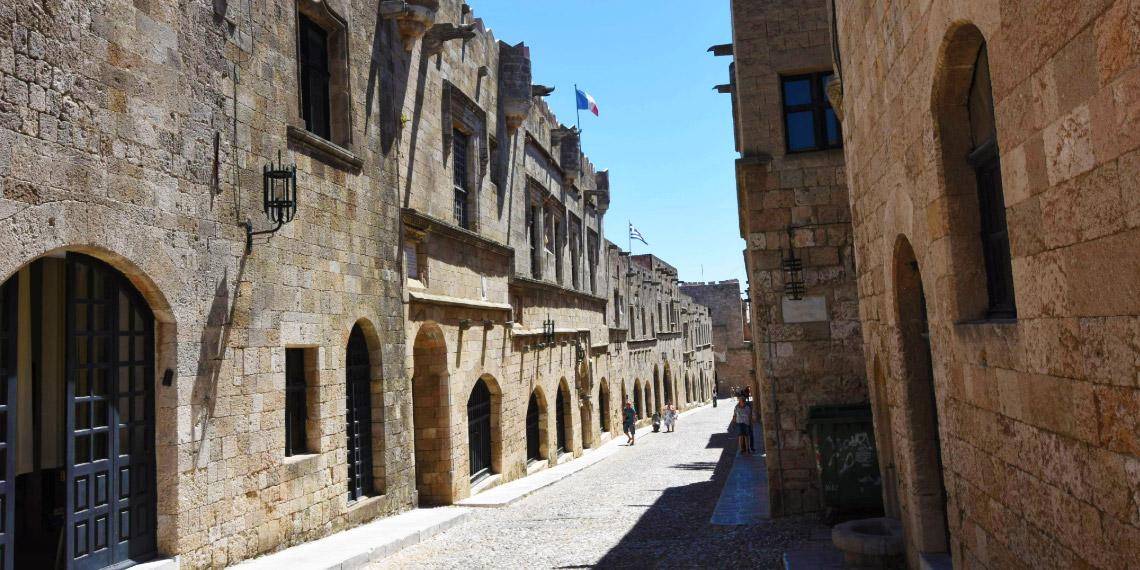The Legacy of the Grand Palace of the Knights of Rhodes

The Grand Palace of the Knights of Rhodes, a medieval castle in the city of Rhodes on the Greek island of Rhodes, originally dates back to the 14th century but was largely destroyed in 1856 by an explosion. The Italians rebuilt the palace during their occupation of Rhodes in the early 20th century. It exemplifies Gothic architecture, blending medieval European and Byzantine design elements. Today, the palace serves as a museum, featuring several courtyards, each with a unique design and purpose, used for gatherings, ceremonies, and defense. Inside, visitors encounter stunning frescoes, intricate mosaics, and detailed carvings that highlight the artistic skill of the era. The palace also houses various artifacts, artworks, and historical items from different periods in Rhodes’ history, offering a captivating glimpse into the island’s vibrant past.
Exploring the Palace
When you visit the Grand Master’s Palace in Rhodes, get ready for an incredible journey through history and architecture. Here’s a friendly guide to enhance your experience:
Location: The palace sits in the heart of the Old Town (Medieval City) of Rhodes. You can find it at Ippoton Street, Old Town, 85100 Rhodes, Greece.
Museum: Today, the Grand Palace of the Knights of Rhodes serves as a museum. Marvel at a collection of artifacts, including furniture, sculptures, and mosaics. Each piece tells a story about Rhodes, the Knights of Saint John, and the palace itself.
Visitor Information:
- Opening Hours: During winter, the palace welcomes visitors daily from 8:30 AM to 3:30 PM, except on Tuesdays. Always double-check the opening hours before you go, as they may change based on the season.
- Entrance Fee: In winter, admission costs €3 (with reduced prices available). Check if there are any entrance fees for the museum and if there are any days or times with free entry.
- Guided Tours: Enhance your visit by joining a guided tour. It’ll help you appreciate the palace’s historical context and significance even more.
Where History Resides and Majesty Abides



Walking from the Archaeological Museum of Rhodes to the Grand Palace of the Knights of Rhodes, I’m surrounded by charming streets, impressive architecture, and a vibrant atmosphere. At the end of the Street of the Knights, I reach the Palace of the Grand Master. Visiting in the morning was a great way to beat the crowds and enjoy a more peaceful experience! The main entrance of the palace is adorned with impressive decorations and heraldic symbols of the Knights. Walking along the enchanting streets of Knight Rhodes, I feel as though I’ve been transported to a place frozen in time.
Originally built in the 14th century by the Knights Hospitaller, a medieval Catholic military order, the Palace of the Grand Master of the Knights of Rhodes served as the residence of the Grand Master of the order and a symbol of their power and influence. Today, the palace is a museum, showcasing several courtyards, each with its own unique design and purpose. These courtyards were often used for gatherings, ceremonies, and defense.
The main entrance of the palace features impressive decorations and heraldic symbols of the Knights, reflecting their rich history and influence. The interior of the palace is adorned with elaborate frescoes, mosaics, carved decorations, and various artifacts, reflecting the artistic styles of the time. The courtyards of the palace are particularly striking, each with its own unique design and purpose, including the Court of the Grand Master and the Court of the Knights.
The panoramic views from the towers of the Grand Palace of the Knights of Rhodes provide a breathtaking vista of the Old Town and the surrounding area. From the towers, visitors can see the ancient city walls, the harbor, and the surrounding countryside, offering a unique perspective on the island’s beauty and history.
Street of the Knights of Rhodes
Walking along the Streets of the Knights in Rhodes feels like time travel. This famous street, also called Ippoton Street or Knights’ Street, vividly showcases medieval grandeur in Rhodes’ Old Town. It served as the central hub during the Knights Hospitaller’s rule, providing lodging for the knights and hosting administrative and communal functions.
The medieval structures, cobbled paths, and towering walls create a vivid picture of history and magnificence. I easily envision the knights and soldiers who once patrolled these streets, safeguarding the city and its riches.
The architecture along this street blends Gothic and Renaissance styles, boasting elaborate facades and intricate details. The narrow, winding streets often lead to hidden squares and serene courtyards, enhancing the sense of discovery and history.
In summary, exploring the Streets of the Knights in Rhodes was a truly enchanting experience, offering me a glimpse into the past and the opportunity to wander through one of Europe’s best-preserved medieval cities.
Photo Gallery: Live the Legend










